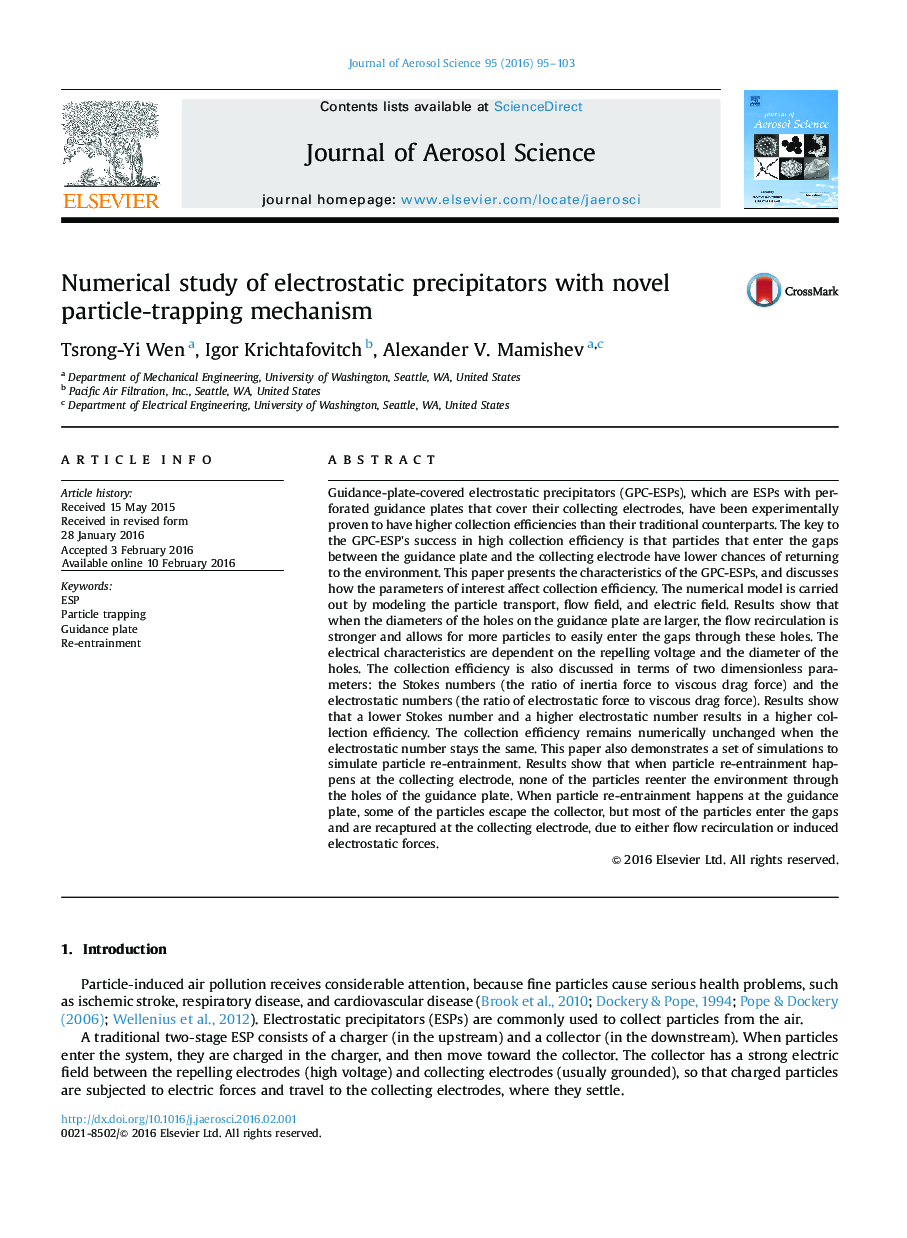| کد مقاله | کد نشریه | سال انتشار | مقاله انگلیسی | نسخه تمام متن |
|---|---|---|---|---|
| 6344416 | 1620728 | 2016 | 9 صفحه PDF | دانلود رایگان |
- Numerical modeling for guidance-plate-covered ESPs is presented.
- Velocity, voltage, electrostatic fields, and particle trajectories are presented.
- Collection efficiencies are discussed by the Stokes and electrostatic numbers.
- A simplified model to simulate particle re-entrainment is demonstrated.
Guidance-plate-covered electrostatic precipitators (GPC-ESPs), which are ESPs with perforated guidance plates that cover their collecting electrodes, have been experimentally proven to have higher collection efficiencies than their traditional counterparts. The key to the GPC-ESP׳s success in high collection efficiency is that particles that enter the gaps between the guidance plate and the collecting electrode have lower chances of returning to the environment. This paper presents the characteristics of the GPC-ESPs, and discusses how the parameters of interest affect collection efficiency. The numerical model is carried out by modeling the particle transport, flow field, and electric field. Results show that when the diameters of the holes on the guidance plate are larger, the flow recirculation is stronger and allows for more particles to easily enter the gaps through these holes. The electrical characteristics are dependent on the repelling voltage and the diameter of the holes. The collection efficiency is also discussed in terms of two dimensionless parameters: the Stokes numbers (the ratio of inertia force to viscous drag force) and the electrostatic numbers (the ratio of electrostatic force to viscous drag force). Results show that a lower Stokes number and a higher electrostatic number results in a higher collection efficiency. The collection efficiency remains numerically unchanged when the electrostatic number stays the same. This paper also demonstrates a set of simulations to simulate particle re-entrainment. Results show that when particle re-entrainment happens at the collecting electrode, none of the particles reenter the environment through the holes of the guidance plate. When particle re-entrainment happens at the guidance plate, some of the particles escape the collector, but most of the particles enter the gaps and are recaptured at the collecting electrode, due to either flow recirculation or induced electrostatic forces.
Journal: Journal of Aerosol Science - Volume 95, May 2016, Pages 95-103
